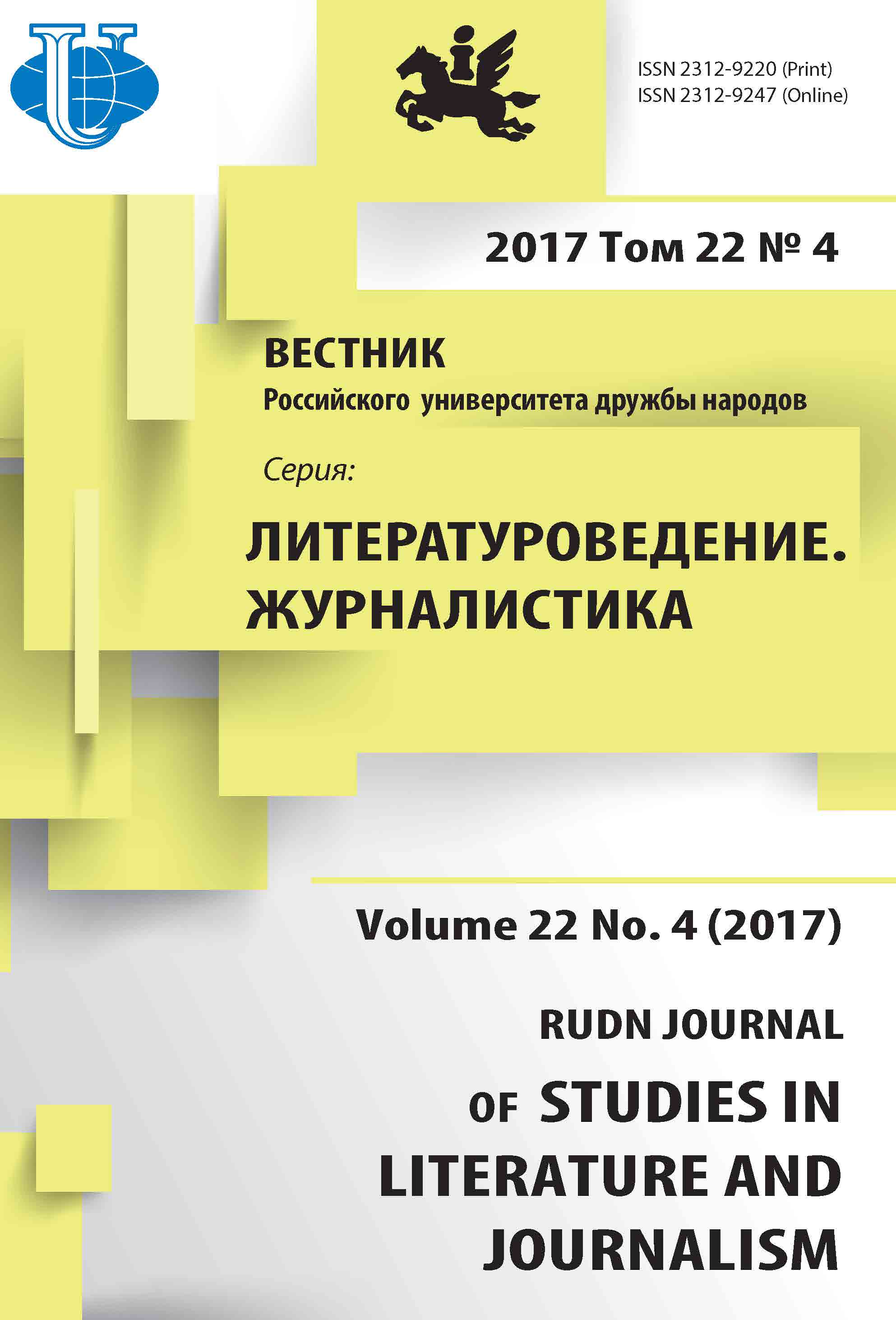CONCERNING THE STATUS OF JOURNALISM AND JOURNALISTIC EDUCATION IN INDIA
- Authors: Matvienko VV1
-
Affiliations:
- Peoples’ Friendship University of Russia
- Issue: Vol 22, No 4 (2017)
- Pages: 703-710
- Section: Articles
- URL: https://journals.rudn.ru/literary-criticism/article/view/17595
- DOI: https://doi.org/10.22363/2312-9220-2017-22-4-703-710
Cite item
Full Text
Abstract
The formation and development of journalistic education in India in the rapidly growing media sector of the economy is a topic that has not been adequately disclosed in the Russianscience studies. Against the backdrop of existing problems in the field of freedom of journalism as a social institution, the rights and position of journalists in this Asian country, the study of the system of training journalistic cadres is of undoubted interest. Journalistic education in India is a unique phenomenon, heterogeneous in its structure, goals and objectives.The article examines and analyzes the key provisions of the system of professional journalism training in India, the role and place of a journalist in the country, the problems of his safety and social security. The attention is also paid to the professional ethics and qualifications of media workers.
About the authors
V V Matvienko
Peoples’ Friendship University of Russia
Author for correspondence.
Email: matvienko_vv@rudn.university
Matvienko Valentin Viktorovich, PhD in Philology, Department of Theory and History of Journalism, Peoples’ Friendship University of Russia.
Miklukho-Maklaya str., 6, Moscow, Russia, 117198References
- Press in India 2013—14. 58thAnnual Reportof The Registrar of Newspapers of India. Available at: http://rni.nic.in/pin1314.pdf (accessed: 10 September 2017).
- Prasar Bharati. Available at: http://prasarbharati.gov.in/ (accessed: 12 August 2017).
- Internetlivestats. (2016). Internet users by country (2016). Available at: http://www.internetlivestats. com/internet-users-by-country/ (accessed: 15 August 2017).
- Murthy, C.S. (2011). Dilemma of course content and curriculum in Indian journalism education: Theory, practice and research. Asia Pacific Media Educator (21), 24—42. Available at: http:// ro.uow.edu.au/cgi/viewcontent.cgi?article=1337&context=apme (accessed: 15 August 2017).
- Ravindranath, P.K. (2005). Indian regional journalism. New Delhi: Authors-press, P. 102.
- World Press Freedom Index. Available at: https://rsf.org/en/ranking (accessed: 01 September 2017).
- BBC Russkaya sluzhba. Available at: https://www.bbc.com/russian/amp/features-41162929 (accessed: 08 September 2017).
- Mezhdunarodnyy antikorruptsionnyy portal. Available at: http://anticorr.media/otkrytokritikovavshaya-induistskuyu-politiku-zhurnalistka-zastrelena-okolo-svoego-doma-v-indii/ (accessed: 08 September 2017).
- Rajpurohit, S. (2014, March 27). Dalit students and journalists — from classroom tonewsroom. Available at: http://kafila.org/2014/03/27/dalit-students-and-journalists-from-classroom-tonews-room-shivnarayan-rajpurohit/ (accessed: 10 September 2017).
- Secretariat, L.S. (May 2013). Standing Committee Report on Information Technology — Issues related to paid news. New Delhi: Ministry of Informationand Broadcasting.
- Tambat, S.V. (2012). Review of the press in India (2008—2012). New Delhi: The Press Council of India; Choudhary, V. (2014, February 7). SC upholds Majithia wage board recommendations. Available at: http://www.livemint.com/Consumer/PMBDN-jXi6e2ovpvss2SQoN/SC-upholdsvalidity-of-Majithia-wage-board.html (accessed: 15 August 2017).
- Balasubramanya, A.S. (2006). Journalists in India — A profile findings of a nationalsurvey. Vidura, 43(3), 45—49.
- Gupta, G. (2009). Perceptions and opinions of television news personnel about roleofnews media. Department of Extension Education, SNDT Women’s University, Mumbai. Unpublished Master Dissertation.
- FICCI-KPMG. (2013). Power of a billion. Realising the Indian dream FICCI-KPMG Indian media and entertainment industry report. Mumbai: KPMG India.
- Barve, U. (2007, July). Cross cultural journalism teaching: Case of an Indian university.Paper presented at the 16th AMIC conference and First World Journalism Education Congress, Singapore.
















